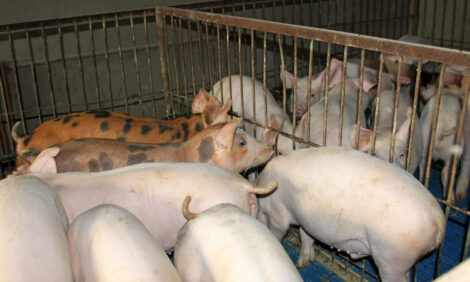



Market Preview: New Rules for Risk Management
US - Weekly US Market Preview provided by Steve R. Meyer, Ph.D., Paragon Economics, Inc.Risk management, it seems, has always been viewed favorably by pork producers. Problem is, it’s rarely practiced to any great degree.
A key reason, of course, is that hogs have generally been profitable – especially for those whose cost of production is better than average. You don’t get the name “mortgage lifters” without actually generating the cash needed to pay off mortgages!
But it looks as though the future may require more risk management action on the part of pork producers. The primary reason is there is very little cash or equity to handle any future losses.
The severity of the industry’s cash/equity situation was driven home again last week with the announcement that Coharie Farms of North Carolina had sought bankruptcy protection as it liquidates its assets. Coharie was founded by Nelson Waters and Lauch Faircloth in 1972. Faircloth served as a US senator from North Carolina in the 1990s. His daughter, Ann, had been running the business for several years. Her statement regarding the filing sounded like this (paraphrasing): “We aren’t throwing any more of our money at this thing.” It’s probably a position being contemplated by many pork producers these days.
The most recent Pork Powerhouse rankings from Successful Farming listed Coharie as having 30,000 sows. I have heard reports that at least 9,000 of those sows would be purchased by other producers or contract growers and never go out of production. My guess is that more will be added to that number, making the net reduction in the US sow herd closer to 15,000 vs. 30,000.
Defining “Risk”
A reporter called last week and asked: “How important is this?” My answer was “It’s important, but no more so than the hundreds of smaller farms that have already been driven out of business by high costs.” I think the better question is: “How do we stop this?”
There are several answers to that question and one of them is better risk management. But before we go down that road, we must ask ourselves: “Just what kind of risk are we managing?” We have historically thought of risk in the hog business in terms of price risk – the possibility that the price of hogs will be below the cost of production. But the shift to higher feed ingredient prices and the tying of corn prices to a volatile oil market requires us to broaden our view of price risk to include, more than ever before, the risk that corn and soybean meal prices will result in production costs that are higher than any price offered for our hogs.
Then there is financial risk, the risk that the business will not have enough cash from either operations or borrowing to meet its obligations. This broader, more immediate and serious form of risk has now risen in importance for many hog producers. I do not know if Coharie Farms’ owners could not meet their cash needs or simply decided they would no longer meet them with infusions of cash from sources outside of the hog business. Still, the result was the same – the end of a business that had once provided hundreds of jobs in rural North Carolina.
The same decision process is happening every day in other parts of the country with, I fear, the same terrible consequences.
When a business has depleted its cash reserves and fully tapped its borrowing capacity, financial risk is so high that price risk must be controlled. There simply is no room for losses – or at least no room for large losses.
But just as the need for controlling price risk in many operations becomes critical, in my opinion, I am hearing a lot of talk along the lines of: “We can’t lock in small margins; we have to make back what we have lost.” I can’t argue with that, but what are the odds of covering those losses in one or even two years?
When producers’ accumulated wealth disappeared in 1998-99, it took eight years to get it back (see Figure 1). It is possible the losses can be recouped faster this time, but just how much risk of losing the entire business can you stand?

Iowa State University Extension Livestock Economist John Lawrence once wrote that the goal of pricing hogs was to not miss the boat and not sink the ship. It is difficult to capture extremely high prices without putting the entire business in peril. Conversely, it is difficult to protect the business and still achieve superior rates of return. Some balancing of those goals must be your goal – with a nod toward safety when cash and equity are low.









